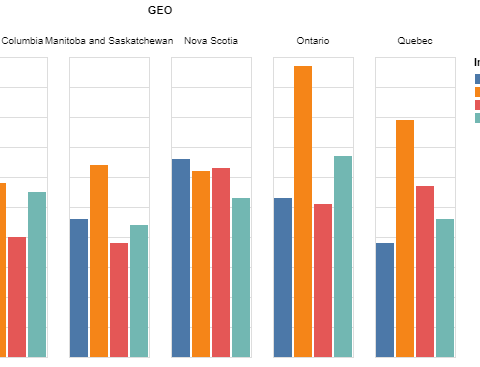With fresh university graduates being asked to “stay in school” to ride out the tough economic environment, experts are beginning to wonder if Canada is already witnessing another round of immigrant departures similar to the 1980’s and 1990’s.
Interviews with bankers, academics and industry researchers who track employment trends point to a troubling phenomenon that has been a hallmark of all recessionary periods: the exodus from Canada of working-age immigrants struck by a ‘triple whammy’ – the historic discounting of their international experience, combined with high Canada-wide unemployment rates and “hyper-cautious” employers.
Studies have shown that as many as two in five economic and business migrants leave the country within 10 years of arrival and this number tends to go up by 50 per cent during economic downturns. Half of them leave in the first year after landing.
All the experts we spoke to pointed to a fundamental mismatch in the economy — a 7.2 per cent unemployment rate but also two million temporary foreign workers, and skills shortages in western Canada. The country is also on target to welcome about a quarter-million new immigrants this year. Diana MacKay, director for education, health and immigration programs at the Conference Board of Canada is as surprised as everybody else about the inability of the market to correct this mismatch. Tools like Workopolis, monster.com and even LinkedIn that help jobseekers connect to opportunities have seemingly failed, she says.
Pointing to the “droves” who returned to Hong Kong after the relatively smooth handover of the island to Chinese control in 1997, MacKay suggests immigrants are inherently risk-takers and willing to move again – both within Canada and internationally. Asked what specifically newcomers should do to make themselves more appealing to hiring managers, she cautioned against “behaving like John Smith (the classic Canadian),” suggesting instead that they should position themselves as “innovators” who bring new perspectives and experiences to the workplace.
Her research group, which surely has the ear of business, recommends that employers should also be “actively seeking” immigrant talent because it is “good for business” as it boosts national productivity and enables Canada to take advantage of market opportunities all over the world.
Chronic under-employment
Employers, though, don’t seem to be getting the message. Benjamin Tal, deputy chief economist at CIBC (Canadian Imperial Bank of Commerce) World Markets, is among those who think employers should be doing a better job of hiring and retaining new talent. He thinks some of the positions being taken by temporary foreign workers can be filled by promoting internally and through in-house training. This could also potentially help newcomers who have suffered from “chronic under-employment” for a long time. In fact, according to a paper he wrote in Aug. 2012, nearly half of all immigrants who arrived between 2001 and 2006 are overqualified for the positions they occupy.
Wage differences also continue to persist, with immigrant earnings being 40 per cent lower, according to Tal. This is worse than in the 1970’s when immigrant earnings were estimated at 80 per cent of average Canadian-born worker salaries. “Immigration is critical to Canada’s economy but it is clear some inherent barriers exist that prevent us from reaping the full economic benefits new Canadians have to offer,” the economist said.
Both the Conference Board and CIBC have estimated the lost Canadian productivity caused by immigrant unemployment and under-employment. The Conference Board reported in 2001 that this wasted human resource was costing the Canadian economy between $3.4 billion and $5 billion annually. Tal estimates the drain much higher: “We estimate that the current employment and wage gaps between new immigrants and native-born Canadians cost the economy slightly more than $20 billion in forgone earnings.”
With these sort of systemic biases persisting and in a tough economic climate that is a fallout of the 2008-09 economic recession, demographers such as University of British Columbia, UBC’s Dan Hiebert would be looking for new data from the Longitudinal Survey of Immigrants to Canada that tracked newcomers during their first four years after arrival. Unfortunately, the last release available from Statistics Canada is dated April, 2007.
If the past is any indication, Canada can expect a similar pattern of what demographers call “out migration” to happen this time around. However, we may not know if we are in the middle of an exodus until well after the latest drove has left. – New Canadian Media




